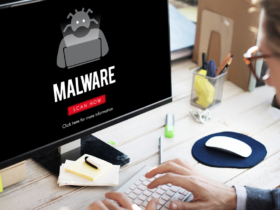Malware is a serious problem that can infect your computer and cause all sorts of problems. It can steal your personal information, send spam emails from your account, and even delete important files. In short, it’s a nightmare. Fortunately, there are steps you can take to protect yourself from malware and even remove it if you do get infected. In this blog post, we will explore how to get rid of malware and keep your computer safe.
What is malware?
Malware is a type of software that is designed to damage or disable computers and computer systems. Malware can be spread through email attachments, websites, or by downloading infected files from the internet. Malware can also be installed on a computer by an attacker who has gained access to the system.
Once malware is installed on a system, it can perform a number of different actions. Some types of malware are designed to steal information, such as login credentials or credit card numbers. Other types of malware are designed to hijack a computer’s resources in order to mine cryptocurrency or conduct other malicious activities.
Malware can be difficult to remove from a system, and it can sometimes cause irreparable damage. In some cases, the only way to remove malware from a system is to format the hard drive and reinstall the operating system.
The different types of malware
Malware is a type of software that is designed to damage or disable computer systems. There are many different types of malware, including viruses, worms, Trojans, and spyware. Some malware is designed to steal information from infected computers, while other malware is designed to disrupt the normal operation of the system.
Viruses are one of the most common types of malware. A virus is a piece of code that replicates itself by infecting other programs or files on a computer. Once a virus has infected a computer, it can spread to other computers through email attachments or network file sharing. Worms are similar to viruses, but they do not require an existing program to replicate themselves. Instead, worms can create their own copies and spread themselves throughout a network without any user interaction.
Trojans are another type of malware that masquerades as a legitimate program or file in order to trick users into executing it. Once executed, Trojans can give attackers access to the infected computer, allowing them to steal sensitive information or install additional malicious software. Spyware is a type of malware that collects information about users without their knowledge or consent. Spyware can track what websites users visit and what they search for online, and it can also gather personal information like credit card numbers and account passwords.
How does malware get onto my computer?
Malware is short for malicious software and is a type of software designed to cause damage to your computer, steal personal information, or both. There are many ways that malware can get onto your computer, including through email attachments, downloading infected files from the internet, and installing pirated software.
One common way that malware gets onto computers is through email attachments. If you receive an email with an attachment from someone you don’t know, or even from someone you know but wasn’t expecting an attachment from, it’s best not to open it. Attachments can contain viruses or other malicious code that can be executed as soon as you open the file.
Another way that malware can get onto your computer is by downloading infected files from the internet. This can happen if you accidentally click on a malicious link in an email or on a website. It can also happen if you download a file from an untrustworthy source. Once the file is downloaded, it can execute code that will infect your computer with malware.
Finally, another way that malware can get onto your computer is by installing pirated software. When you install pirated software, you’re bypassing security checks that are in place to protect you from malicious code. This leaves your computer vulnerable to infection, and all it takes is downloading and installing one piece of pirated software to put your whole system at risk.
How can I prevent malware from getting onto my computer?
In order to prevent malware from getting onto your computer, there are a few steps you can take. First, be sure to install an antivirus program and keep it up to date. Antivirus programs can detect and remove many types of malware.
You should also be cautious when downloading files from the Internet. Only download files from trusted sources, and be sure to scan any downloaded files with your antivirus program before opening them.
Finally, practice safe browsing habits. Avoid clicking on links in email messages or on websites that you don’t trust. If you do accidentally click on a malicious link, do not enter any personal information on the resulting website.
What should I do if my computer has malware?
If your computer has malware, there are a few things you can do to try and remove it. First, you can run a virus scan with your antivirus software. If that doesn’t work, you can try using a malware removal tool. Finally, if all else fails, you can reformat your hard drive and reinstall your operating system.
How to remove malware?
If your computer is infected with malware, you may be experiencing any of a number of symptoms. Your computer may be running slowly, crashing frequently, or displaying error messages. You may also see new programs that you didn’t install, or strange toolbars or pop-ups.
Malware is short for malicious software, and it’s anything that can cause harm to your computer or invade your privacy. Viruses, Trojan horses, spyware, and adware are all types of malware. Some malware is designed to damage your computer, while other types are designed to gather your personal information like passwords and credit card numbers.
The best way to remove malware is to use an antivirus program that can detect and remove it. If you don’t have an antivirus program installed on your computer, there are many free options available online. Once you’ve installed an antivirus program, run a scan of your computer to find and remove the malware.
If you suspect that your computer has been infected with malware but you’re not sure how to tell, there are some things you can look for. Check for any unusual behavior like slow performance, unexpected crashes, or changes to your homepage or default search engine. You can also use a free online virus scanner like VirusTotal to scan individual files or URLs for malware.
What to do if you think you have malware?
If you think you have malware, there are a few things you can do to try and remove it. First, run a malware scan with your antivirus software. If that doesn’t work, you can try using a malware removal tool like Malwarebytes. Finally, if all else fails, you can try reformatting your hard drive and reinstalling your operating system.
How to get rid of malware?
There are a few different ways that you can get rid of malware, but the most important thing is to act quickly. The longer you wait, the more damage the malware can do.
One way to remove malware is to use an anti-malware program. These programs are designed to scan your computer for malware and remove it. There are many different types of anti-malware programs, so you will need to choose one that is right for your needs.
Another way to remove malware is to manually remove it. This can be a difficult and time-consuming process, but it is possible. You will need to have some technical knowledge in order to do this, so it is not recommended for everyone.
The best way to protect your computer from malware is to prevent it from happening in the first place. This can be done by using a good antivirus program and keeping your software up to date. You should also avoid clicking on links or attachments from unknown sources.
The best anti-malware software
There are a few different types of anti-malware software out there, but which one is the best? Here are a few factors to consider when choosing the best anti-malware software for your needs:
- Ease of Use: You don’t want to spend hours trying to figure out how to use your anti-malware software. Look for something that is easy to install and set up.
- Effective Protection: Make sure the anti-malware software you choose can actually protect your computer from malware. Read reviews and compare features to find the most effective option.
- Affordable: There’s no need to break the bank when it comes to anti-malware software. Look for something that fits your budget and offers good value for money.
Conclusion
There are a few things you can do to get rid of malware, but the best thing to do is prevention. Prevention is always better than cure, so make sure you have a good antivirus program installed on your computer and that you keep it up to date. You should also be careful about what websites you visit and what email attachments you open. If you’re ever in doubt, err on the side of caution and don’t click anything. Finally, if your computer does become infected with malware, don’t panic. There are a number of ways to remove it and get your computer back up and running again.











FIND US ON SOCIALS